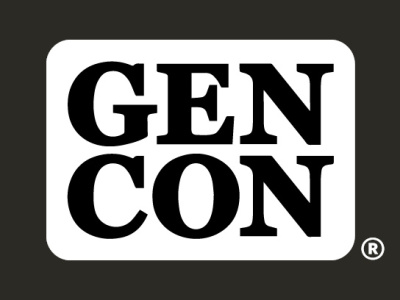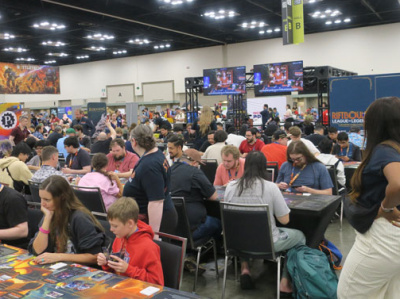 Sometimes I find myself writing and thinking so much about the medium of comics or the business of comics that I don’t stand back enough to appreciate the art form of comics. But this past week, I had a few reminders of how lucky we are as fans to be living through a moment when both the artistic and commercial possibilities of comics are at their peak.
Sometimes I find myself writing and thinking so much about the medium of comics or the business of comics that I don’t stand back enough to appreciate the art form of comics. But this past week, I had a few reminders of how lucky we are as fans to be living through a moment when both the artistic and commercial possibilities of comics are at their peak.On Sunday, my wife and I caught the matinee of Thor: The Dark World. According to the box office reports, we were not alone (see “’Thor’ Sequel Hammers Box Office”). Although I was interested to see the movie, I was also apprehensive – not just because the fates of all of pop culture seem to hinge on each new franchise release, but because I didn’t want to waste two hours of a pleasant afternoon enduring some mindless slugfest.
OK, I stipulate we are in the realm of “first world comic fan problems,” when the latest multi-hundred-million dollar special effects extravaganza adopting a well-loved but not totally obvious fan favorite icon might fail to completely overawe everyone and everything in its path.
But let’s face it: the threat of screen fatigue hangs heavy over big budget superhero movies and each new release seems to go double or nothing on the stakes. When these movies were oddities and exceptions, co-existing alongside equally celebrated non-superhero action films, buddy comedies, political thrillers and serious dramas, the conventions of superheroism seemed like a novelty. Now that they dominate the box office, the formulas have become familiar and our senses have calcified against the onslaught of ever-bigger effects and explosions.
Now comes Thor: The Dark World, a superhero movie so imaginative and strange that it completely resets expectations of the genre. The producers seem to have fully internalized the grandeur of the Kirby-Simonson vision of the character and his world. Thor shows us places we haven’t seen before and gives us a fresh take on myth, science and magic. The script effortlessly balances profundity and goofiness, using humor to lubricate friction points where the cosmic tectonics of the plot threaten to collapse under their own sense of importance.
The closest I can come to describing the sensibility of the movie is a big-budget reimagining of The Adventures of Buckaroo Bonzai, only with a big blond guy with a cape and a hammer. Maybe that’s what some people expected when they bought their tickets, but it was certainly a new one on me.
Thor seems to have connected with a mass audience, generating respectable box office numbers and putting questions about the long term viability of the superhero genre off for another day. Most importantly, it validated the producers’ decision to go beyond the obvious in terms of seeking inspiration from the comics source material, gently pushing creative boundaries and giving the tried-and-true formula a different look.
At the complete other end of the spectrum from the gaudy, commercialized public face of comics in the 2010s, I was privileged to take part in a fascinating “comics as literature” event at the Seattle Public Library on Thursday, November 7. Seven Stories Press, publishers of the The Graphic Canon, convened a panel of five cartoonists – Megan Kelso, Stan Shaw, David Lasky, Colleen Frakes and Roberta Gregory – to discuss their contributions to the set, which features comic artists adapting the classics of world literature to graphic format.
The Graphic Canon, edited by Russ Kick, has drawn praise at the highest cultural levels for its range, ambition and production value. Artists ranging from Robert Crumb, Will Eisner and S. Clay Wilson to Dame Darcy, Peter Kuper and Molly Crabapple give their interpretations of everyone from Homer to Jane Austin to Jean-Paul Sartre.
At the Seattle event, the panelists talked in depth about the creative process they went through in analyzing the original stories, the challenges of adapting their own personal styles to complement the prose authors’ meanings, and the role that their aesthetic choices played in the realization of the final pieces. For a literary audience that may not have much exposure to comics beyond the obvious commercial manifestations, this was a master class in the creative process, laying bare exactly how much hard work goes in to making the approachable styles of a Lasky or a Kelso look “easy.”
The critical reception accorded The Graphic Canon is also instructive. Fifteen years ago, a project like this would have seemed to outsiders like a gimmick (“Classics Illustrated revisited, only this time with T&A!”) or a desperate bid for artistic credibility (“Zap! Bam! Pow! Comics Take On the Classics!”). Today, most serious literary reviews have embraced a language and approach to evaluate graphic narrative works on their own terms. As an anthology that runs to three volumes and nearly a hundred contributors, The Graphic Canon is unavoidably uneven in its quality, but most of the reviews seemed up to the challenge of evaluating the nuances, praising the imaginative and well-realized approaches, and providing a measured critique of the ones that fall flat. That, in its way, is as big a win for comics the artform as the success of Thor: The Dark World is for comics the genre.
The point here is not that Thor: The Dark World and The Graphic Canon have anything in common in terms of aesthetics or intentions. In fact, they conveniently occupy the divergent poles of comics culture in 2013. But it’s also not quite right to say that their audiences are mutually exclusive.
We live in an age of visual communication that permeates all portions of our lives, from our work to our serious interests to our frivolous diversions. One feature of that world is that the skills and interests of comic creators and comic fans of every stripe – once marginalized and mocked – are now ideally adapted to the needs of both commerce and culture. That moment won’t last forever, but the best way to prolong it is for creators to keep pushing the boundaries on both sides. Fortunately, each week seems to bring examples great and small that this is continuing to happen.
-- Rob Salkowitz (@robsalk) is author of Comic-Con and the Business of Pop Culture and is working on a new project on the future of marketing and retail in the digital age.
The opinions expressed in this column are solely those of the writer, and do not necessarily reflect the views of the editorial staff of ICv2.com.







